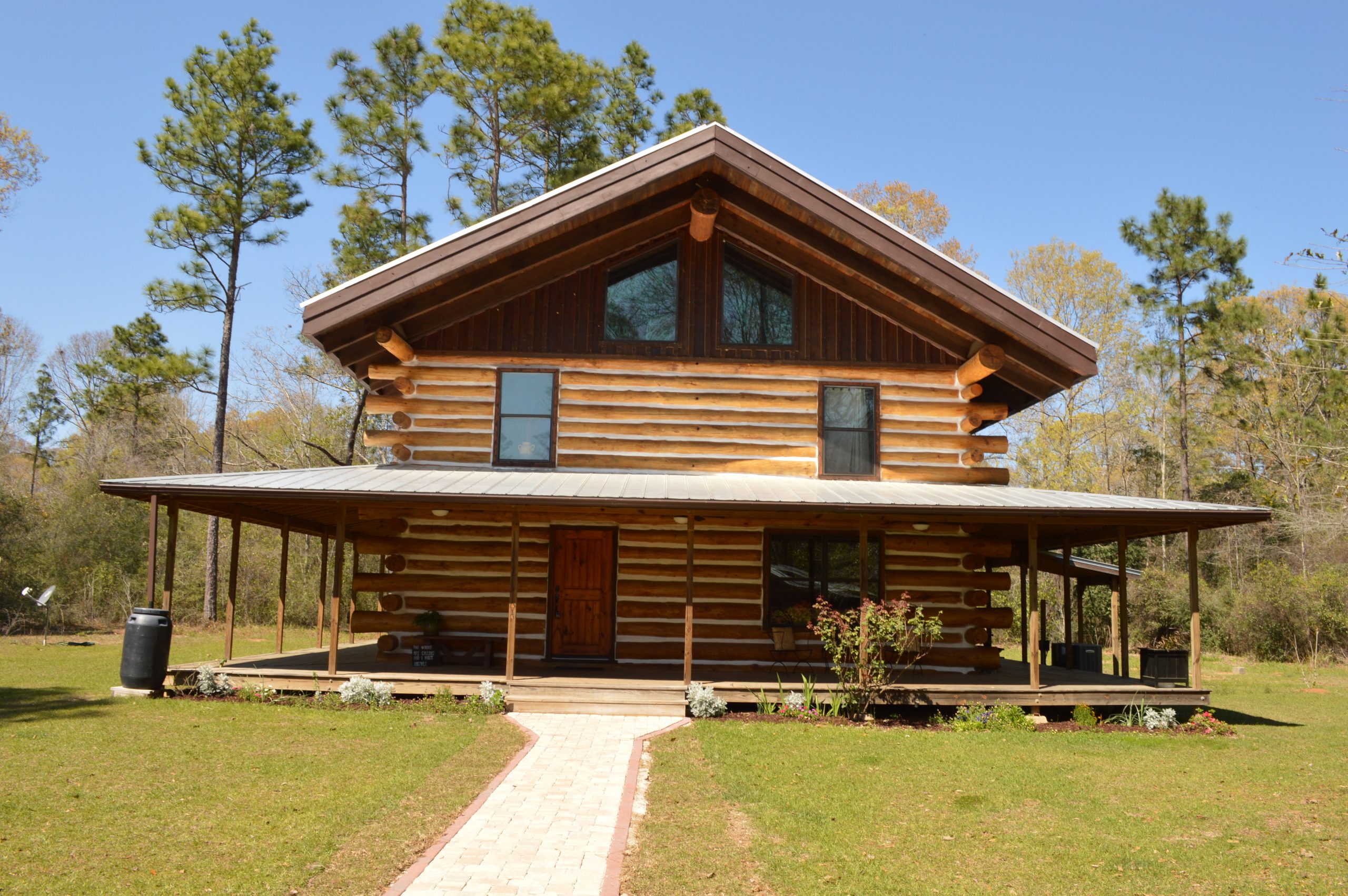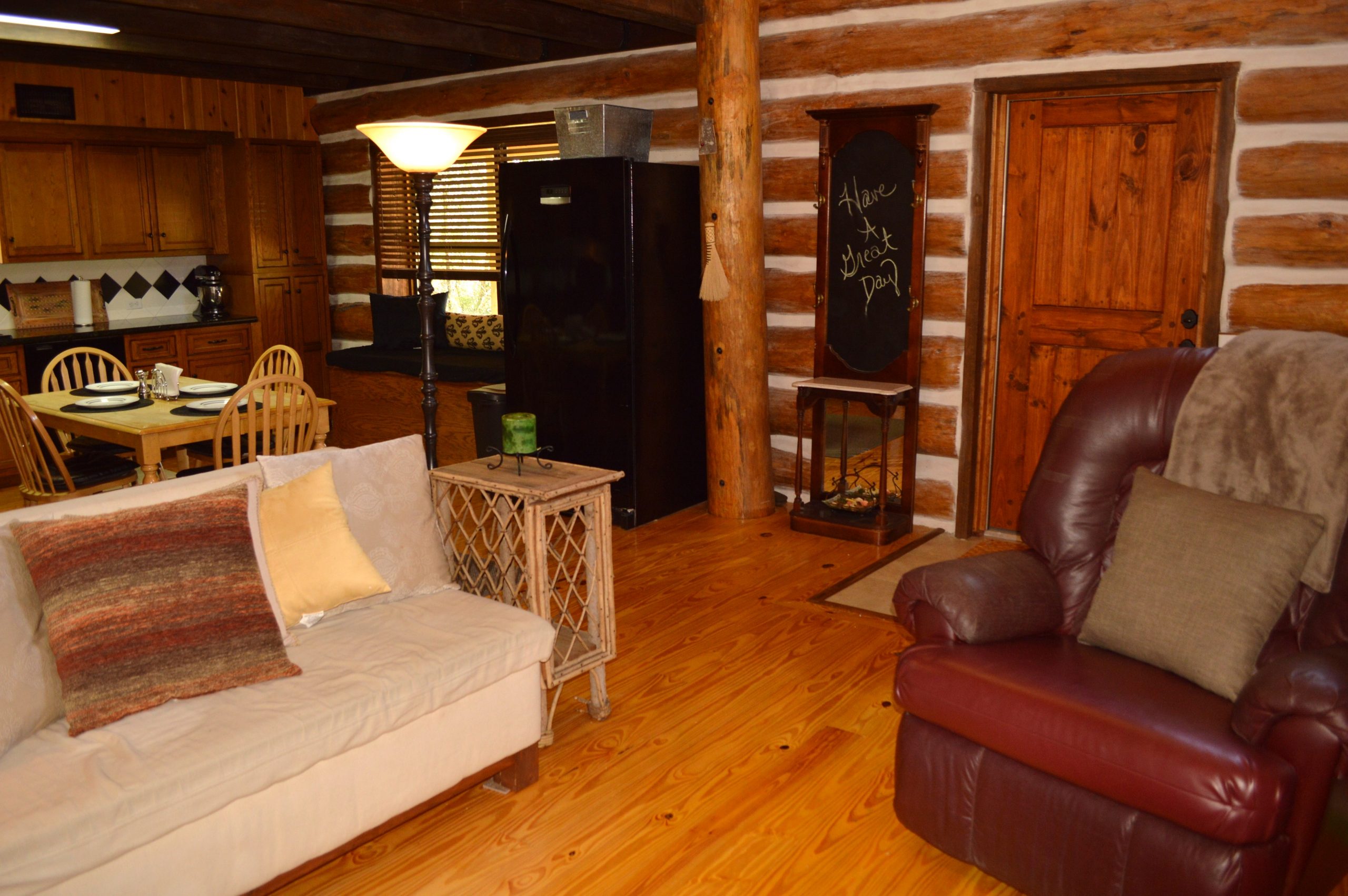A lot of people are interested in our log home and how we built it so I thought I would just put up a page here explaining the process. In 2008 we flew across the country to Washington State to take a two day log home building class. Neither of us had any prior construction experience, nor do we have any people in our families who work in construction. In 2009, we bought five acres and moved a thirty-three foot travel trailer onto it. Keith, his dad, and his uncle had planted the trees on his grandfather’s land twenty-five years before we started building. Talk about forward thinking! Just kidding. They had no idea that those trees would one day become a house; they were planting them to sell in the future for telephone poles.
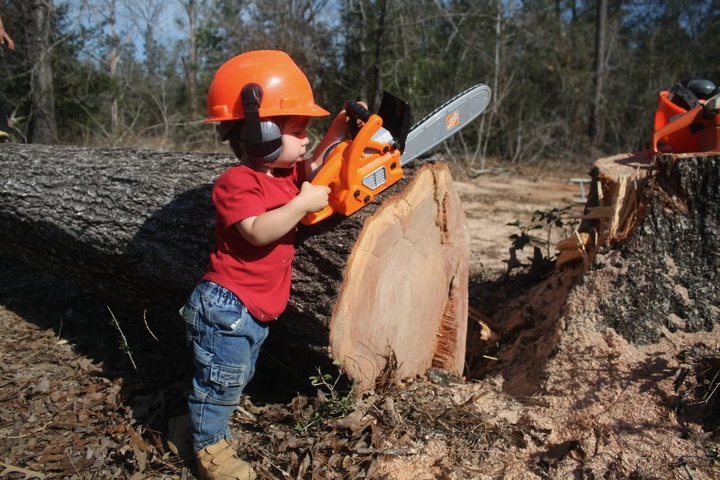
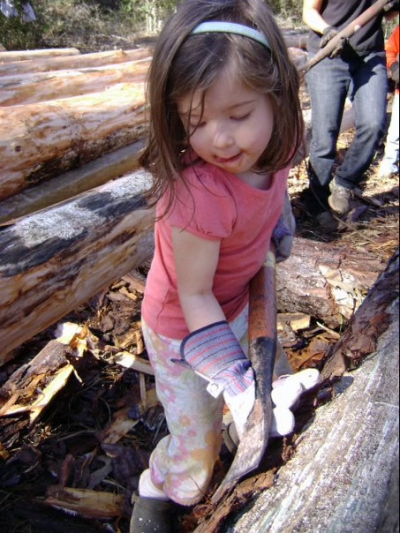
We had racks and racks of logs all over the property. The early days were spent peeling logs all day. At lunchtime and after dark, I would homeschool. Keith worked out of town. He would come home on Thursday or Friday night and then leave again on Sunday after church. After the logs were peeled we would place them on the wall and Keith or his dad would pin them to the log below with rebar every couple of feet. I cut over a thousand sticks of rebar. It was a time consuming process, especially when the logs weren’t straight. Some days we would work all day and only get one log up. Once the shell was up, I pressure washed every log, inside and out to get the cambium off. Then Keith used an Osborn brush to smooth out all the fibers. Next we sanded and stained all the logs.
Next, we hired some guys to come help me with the roof. I drove the forklift that would lift them and their supplies up and down all day long. They came early in the morning and worked until lunch. The Florida heat is so bad, they would take a break until about three. During the break I would homeschool Rebecca. They would come back and we would work for another three or four hours. Then I would cook dinner and homeschool Ashton until I was too exhausted to do any more.
Keith and his dad cut out all the doors and windows with a chainsaw and an angle grinder. The logs still had big gaps in between that we had to fill with chinking, a thick white mortar that gets spread between the logs. First, we had to drive nails into the logs every couple of inches inside and out so that the chinking would have something with which to adhere. Then we shoved insulation behind those nails. Next we (mostly Keith’s dad) mixed up hundreds of batches of chinking that we had to spread out and smooth between the logs.
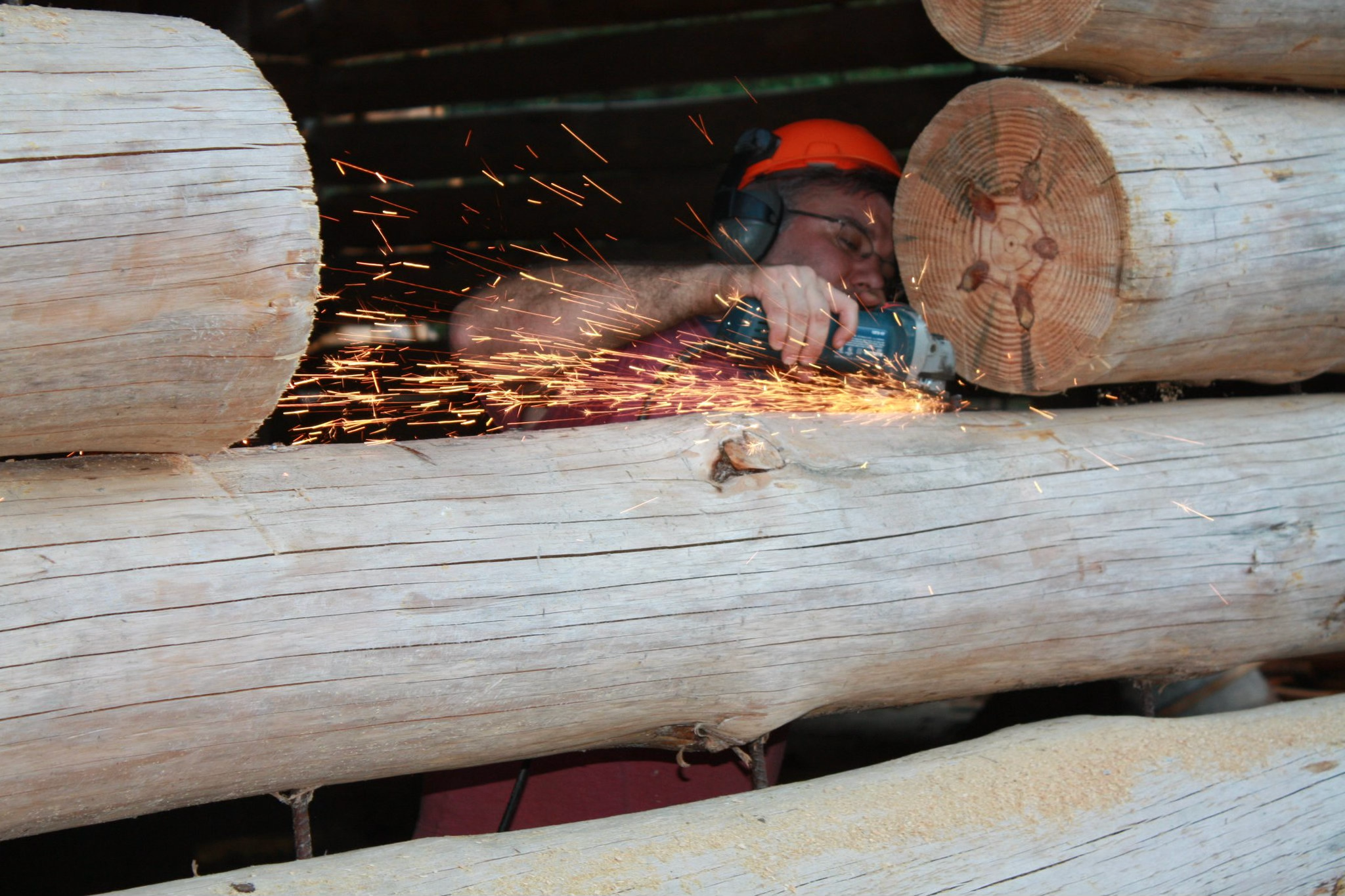
Next we put in the floor joists. By this time, we were pretty tired and ended up hiring out the interior framing, porch, drywall, plumbing, and tile work. We learned a lot through this whole process. There is something about building that is so satisfying and rewarding. After we built the log home we went on to build several timber-frame structures. We learned ways to make things just as beautiful and sturdy but less time-consuming. We have plans in the future to start a new build, so stay tuned!
